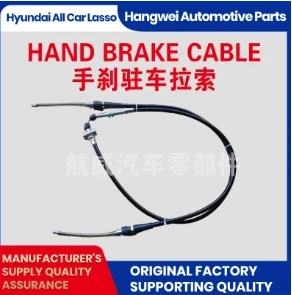Understanding the Function of Hydraulic Lines in Clutch Master Cylinders
Understanding the Clutch Master Cylinder Hydraulic Line
The clutch master cylinder hydraulic line is a critical component in the operation of a vehicle's manual transmission system. It plays an essential role in transmitting the driver's input to the clutch assembly, enabling seamless gear changes. This article will delve into the function, structure, and maintenance of the clutch master cylinder hydraulic line, emphasizing its importance in ensuring a smooth driving experience.
The Basics of the Clutch System
In a manual transmission vehicle, the clutch is a mechanical device that engages and disengages the engine from the transmission. When the driver presses the clutch pedal, this action actuates the clutch master cylinder, which is filled with hydraulic fluid. The master cylinder is connected to a hydraulic line that leads to the slave cylinder located at the clutch assembly. The transfer of hydraulic force from the master to the slave cylinder allows the clutch to engage and disengage, facilitating gear shifts.
The Structure of the Clutch Master Cylinder
The clutch master cylinder consists of a piston housed within a cylinder and is connected to the clutch pedal. When the pedal is pressed, the piston moves forward, pushing the hydraulic fluid through the hydraulic line. A reservoir holds the hydraulic fluid, ensuring that there is always enough fluid for proper operation. The system is designed to be sealed, preventing air from entering and compromising functionality.
Hydraulic Line Functionality
The hydraulic line is a vital conduit that carries hydraulic fluid from the master cylinder to the slave cylinder. This line must be robust and resistant to pressure and temperature changes, as it must withstand the force exerted during clutch operation. Typically made of high-pressure rubber or reinforced material, the hydraulic line is designed to prevent leaks and ensure a reliable connection between components.
One of the critical aspects of this system is that it operates on Pascal's principle, which states that pressure applied to a confined fluid is transmitted undiminished throughout the fluid. When the driver presses the clutch pedal, the increased pressure results in the movement of the slave cylinder, which in turn disengages the clutch.
Signs of Failure in the Hydraulic Line
Like any component in an automotive system, the clutch master cylinder hydraulic line can experience issues over time. Common signs of a failing line include
clutch master cylinder hydraulic line

2. Soft or Spongy Clutch Pedal A loss of hydraulic pressure may result in a clutch pedal that feels soft or spongy when pressed.
3. Inability to Disengage Clutch If the line is compromised, the fluid may not reach the slave cylinder effectively, leading to difficulties in shifting gears.
4. Low Fluid Level Constantly needing to top off the hydraulic fluid reservoir may suggest a hidden leak in the hydraulic line.
Maintenance and Care
Regular maintenance is critical to ensure the longevity of the clutch master cylinder hydraulic line and associated components. Here are some tips for ensuring proper function
- Routine Inspections Checking the hydraulic lines for wear or damage during routine vehicle maintenance can help catch potential issues early.
- Fluid Checks Regularly check the hydraulic fluid level and its condition. Modern hydraulic fluids should be clear; any discoloration (especially dark or murky) may indicate contamination.
- Addressing Leaks Promptly If any signs of leaking are detected, it's important to address them immediately. Ignoring leaks can lead to further damage and expensive repairs.
- Use Quality Parts When replacing any components, including the hydraulic line, always opt for high-quality or OEM parts to ensure reliability.
Conclusion
The clutch master cylinder hydraulic line is an essential element of the manual transmission system, directly affecting the driver's ability to control the vehicle's performance. By understanding its function, recognizing the signs of failure, and performing regular maintenance, drivers can ensure a reliable and smooth driving experience. Regular attention to this vital component helps maintain not just performance but also the overall safety of the vehicle.
-
Upgrade Your Control with Premium Throttle CablesNewsAug.08,2025
-
Stay in Control with Premium Hand Brake CablesNewsAug.08,2025
-
Experience Unmatched Performance with Our Clutch HosesNewsAug.08,2025
-
Ensure Safety and Reliability with Premium Handbrake CablesNewsAug.08,2025
-
Enhance Your Vehicle with High-Performance Clutch LinesNewsAug.08,2025
-
Elevate Your Ride with Premium Gear CablesNewsAug.08,2025
